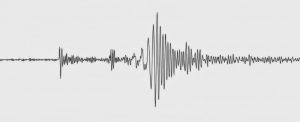
The Human-Induced Earthquake Database (HiQuake), the world’s most complete database of earthquake sequences proposed to have been triggered by human activity, now includes approximately 730 entries, according to a report published October 4 in the “Data Mine” column of the journal Seismological Research Letters.
Mining projects (37%) and water impounded behind dams (23%) are the most commonly reported causes of induced earthquakes, but unconventional oil and gas extraction projects using hydraulic fracturing, are now a frequent addition to the database, said Miles Wilson, a geophysicist at Durham University working on the HiQuake research effort.
“Any successful hydraulic fracturing operation induces microseismicity because the rock is fractured. The number of hydraulically fractured boreholes has increased in recent years, so there is obviously going to be a trend between the number of successfully hydraulically fractured boreholes and the amount of associated microseismicity,” Wilson said. “The more important trend is that between hydraulically fractured boreholes and unusually large earthquakes, most likely related to the reactivation of pre-existing geological faults.”
Other human activities related to unconventional extraction contribute to induced earthquakes as well, Wilson noted. “The most obvious induced seismicity trend in HiQuake is the recent increase in the number of waste-fluid disposal projects reported to have induced earthquakes. This increase is consistent with increased waste-fluid disposal activities in the USA.”
HiQuake, which is freely available at http://www.inducedearthquakes.org, was first developed in 2016 by a group of researchers from Durham and Newcastle Universities, who were funded by the Dutch oil and gas company Nederlandse Aardolie Maatschappij to review the full global extent of induced earthquakes.
To build the database, Wilson and his colleagues analyzed peer-reviewed literature, academic presentations, media articles, and industry and government reports for projects where scientific evidence suggests that the human activity was the cause of an earthquake sequence. Each entry in the database corresponds to a project, or phase of a project. The projects extend back almost 150 years, with most maximum observed magnitude earthquakes falling between magnitude 3 and 4.
The largest proposed induced earthquake in the database was the 2008 magnitude 7.9 Wenchuan earthquake that occurred in China in response to the impoundment of the Zipingpu Reservoir only a few kilometers away from the mainshock epicenter. The HiQuake researchers were initially surprised to find that such large magnitude earthquakes were proposed as induced, Wilson said, “but most of the stress released in these cases is of natural tectonic origin. The anthropogenic activity is just the final straw that releases this built-up stress.”
At first, Wilson and colleagues were also surprised by the variety of proposed causes for these quakes, including nuclear explosions and the building of heavy skyscrapers. “With hindsight we probably shouldn’t be surprised by any anthropogenic cause. All anthropogenic projects influence forces acting in the Earth’s crust, for example by adding or removing mass, so we shouldn’t be surprised that the Earth responds to these changes and that in some cases earthquakes are the response.”
Human activities that act on the crust are likely to multiply in the future, Wilson noted, as projects to tap into geothermal sources of energy and to store carbon dioxide emissions become more widespread.
“Additionally, mines may become larger, deeper, and more extensive, surface water reservoir impoundments more common, and buildings on larger scales could be built to meet a growing world population and resource demand,” he said. “Perhaps one day a balance will need to be struck between earthquake hazard and resource demand.”
Reference:
“HiQuake: The Human-Induced Earthquake Database,” Seismological Research Letters (2017). DOI: 10.1785/0220170112
Note: The above post is reprinted from materials provided by Seismological Society of America.










